
There are three simple
rules for making a smooth landing. Unfortunately no one knows what they
are.
1999 I
started flying at WVI (Watsonville Municipal Airport, CA) at the 
(click on the logo).
Kevin Moon, my first instructor, claims that many students tried
to kill him before, but none right in front of his home, with his dad
watching from the backyard. I can explain. I did enter an `unusual
attitude' there, as instructed, but
maybe overdid the 'unusual' part a bit :-). Kevin tried to
teach me good, precise landings. Once he asked me
how old I am (I was 38, twice his age?) and then
complimented me on having a "pretty good coordination
FOR MY AGE :-|
Then, one day, I flew alone:

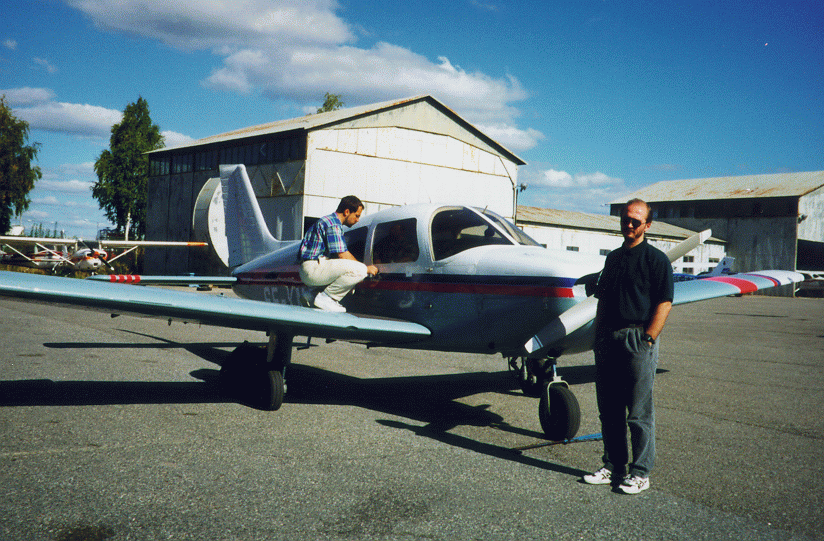
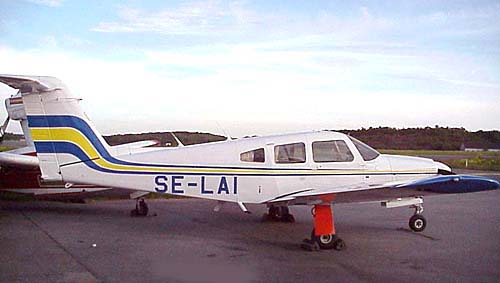
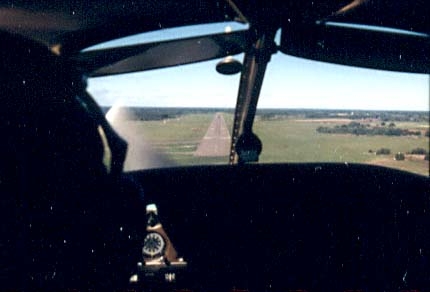
The pictures were taken by my brother Andrzej, an accomplished photographer, who braved the skies and the sea with us.

For those really interested, here are some more snapshots from the trip. #1, where I just have swallowed a bug(?). here is #2, here is #3, here is #4 , here is #5 , and here is #6.
2000
In the summer of 2000, I had a chance to fly some more in the Bay Area. My CFI was Travis Smith at 2 Genes Aviation, WVI. I really enjoyed flying with him.
I particularly liked hood-work (i.e., flying blindly) at night.
You close your eyes, the instructor is putting the plane in an awkward
attitude, e.g. on its egde (90 degrees bank), so it starts accelerating
towards the ground (he does it gently so you don't know it!). Then
you open your eyes, take over controls, look at the gauges, figure
out in 2 seconds the attitude of the plane (after 20 seconds, you would
"land" rather hard), and you get out of it - levelling off in a straight
flight (all the time with reference to instruments only). Gee,
much more fun than gently flying Boing 747 for 9 hours (I assume).
We flew over NASA/Ames base and landed in Oakland at night. There is
something in this flying by night, definitely.
Did you know that a pilot can radio the tower and ask the controller to
"kill the rabbit" at night? (Animal-rights activists, calm down. It's
about switching off the running wave of white strobe lights
normally showing the way near the runway at big airports.)
I switched to Piper Cherokee (N32838), which looks similar to the SE-KMO shown above. No matter how hard I tried, this aircraft having STOL kit (downward sloping wing endings for Short Take-Off and Landings) would not enter any of the semi-intentional acrobatics I could get into in a Cessna 150 (Well, in fact I did those only once, half-turn incipient spin at a safe altitude).
After a total of some 40 hours, the airplane started obeying me.
Once, I made a little mistake on the ground at Monterey airport
while flying solo. I crossed the "hold line" on a taxiway leading to the
runway. The bad thing was on that day there was an FAA inspection in
the tower (@#^!) and I almost got nailed for my mistake. (I
didn't go far past the line and, besides, the controllers were
reasonable people).
This story is worth telling. It's nearly identical with the one
described in Jeppesen (Private Pilot manual) in section on communication
errors. Somebody understands "take position and hold" and enters the
runway after the instruction from tower to "hold the position". It
seems difficult to misunderstand a simple instruction but in fact it is
very easy--radios are noisy, conversation unintelligible (other traffic
talking on the same freq.), you are doing 3 other things at the same
time and, most of all, you do expect to hear "position and
hold". Anyway, the inspector asked me later
"You are a rookie, aren't you?" and I wasn't sure what a rookie is...
talk about communication problems.
Another story worth telling can be titled Operation COOKIE DROP. On the day of my theory test, I was driven to the airport by somebody, to be picked up after flying by my wife, who was to drive the distance from Santa Cruz to Watsonville (25 min. drive if lucky). To my horror, I discovered that the keys to our car were in my pocket! So, not only did I have no way to get back home, she was stuck there and couldn't go shopping. But... wait a minute. I did have a way of delivering the keys to her: the airplane! I put the keys into a package of chocolate chip cookies I happened to have in my bag, called Dorota and asked her to walk to a nearby meadow with kids in 10 minutes, and started up the Cherokee. The day was beautiful, although slightly windy, so I knew my airdrop had to be done with wind correction. When I arrived at the UCSC meadow and started circling at low altitude, I must have terrified some bikers who probably thought I was about to crash-land. My family was not in sight. After a long while, I spotted them. I opened the tiny plexiglass window each Piper has, pushed the cookies out at the right moment, flying slow with extended flaps at some 300 ft above the grass.
Bingo! I missed them by only 40 ft. - of scratchy, thorny dessicated desert-like shrubs, which Dorota did not appreciate at all. To her surprise, when she finally picked up the package and looked inside, she found lots of cookie crumbs but no keys. (They fell out after impact.) She thought it was just an excercise but was confused to see me climb, wave the wings and depart. Fortunately, she realized what happened and found the keys, so she could go shopping and I could come back home that day. And if you wonder about the legality of dropping cookies from the airplane, amazingly enough FAR/AIM says it's ok, if you need to. Check yourself :-)
I didn't take/scan areal pictures, but you should check the excellent site of Zdravko Podolski. I've flown to many of the places in California he describes (and those he doesn't, like Fresno, San Luis Obispo, Santa Barbara). Bay Tour, soaring above its bridges (Golden Gate) and its prisons (Alcatraz, San Quentin). Amazing views!
Only flying around the Puu-Oo vent of Kilauea volcano on the Big Island of Hawaii, which I once did with an instructor, beats flying in the area from Marin County to Santa Inez Mountains. I wonder how it is to fly in the Sierras.
You can do a Bay Tour in uncontrolled airspace if you stay within about 2000 ft above the ground. Highly recommended. Solo student pilots normally can't enter class B airspace mashroom above San Francisco Intl. (SFO). If they do, then they can't random-walk for sightseeing :(
It was definitely my lucky day. My first-ever passenger, Geoff Bryden (what a courage!), walked away more or less intact. After the touchdown at Half Moon Bay he even said "wow, smoother than the airliners!". I decided it wasn't the best time to discuss some of my other landings.
2001
I started flying solo and with passangers around Stockholm. Life has it's good moments. Strangely enough, some passangers are less enthusiastic about flying than myself and need to be begged to try it (yes, Dorota). I woundn't know why. Others (my Dad) do not like >2 G accelerations. Hmm. My Kids loved 0G...2G...0G, however. To the extent that I had to switch off the back-seat intercom before landing to cut off their noises and requests for more.
One of my memorable solo trainings involved landings in Katerineholm and then Gnesta/Vangso on rather short & soft runways (grass) in large gusty crosswinds. I learned my and the airplane's limits! First, w/o my GPS I would have a hard time finding these airstrips quickly. Grass is a grass is a grass. But the main thing was the cross wind of 15 knots (or more?). Advice is to go around. There is a wrong urge to land anyway, and I did land even after a **nasty** gust, but I'll try to follow my own advice in the future.
Then, 8-12 July, I flew a little Cessna 150 (SE-GKC) solo from
Stockholm to Gdansk, Poland, via Kalmar (ESSB-ESMQ-EPGD).
Amazing how fast the lack of clear horizon line over the sea plus the
lateral imbalance of the little Cessna with 1 occupant caused it to bank
and diverge from the strait -and-level flight once I started
reading the map or look inside the cockpit for 15 seconds. It made me
recall how Ch. Lindbergh was flying his "Spirit of St. Louis" which
would do something similar. This saved his life (had it descended
gently, Lindbergh would surely fall asleep and plunge into Atlantic.)
Some war stories:
WARSAW CONTROL: SE-GKC, say time of Kartuzy, ME: !!??%! Uhm, Say
again! [Never been asked the time-of-arrival at a radio beacon
before].
GDANSK APPROACH: SE-GKC, are you avoiding clouds? ME:
Affirmative, I will be lining up with the runway shortly [A lie to cover
up my poor navigation; didn't have time to reprogram my GPS for the
approach offered].
But once close to EPGD, everything went smoothly; nice airport run almost exclusively (it seems) by nice women, starting from the Tower, and ending with the Boarder Guard and passport control. I felt like in the Polish cult sci-fi comedy "Seksmisja", where the world is run by women. I enjoyed it.
The weather wasn't great that month and I was always running from some cold or warm front. I landed in Gdansk 20 minutes before the arrival of a cold front which previously did damage in the western Europe. It did live up to its reputation. Two days later parts of Gdansk were under water, several people died including one guy in his car at the flooded intersection. Some towns got 1/2 (!) of the yearly average rainfall. I got more than 100% of mine, when we rented a boat and went to explore lake Ostrzyckie with my son. My shoes and backpack (incl everything in it) were dry after half a day of drying with a hair-dryier. I never got to Warsaw, because of the weather.
Going back was a low-flying excercise across the Baltic. Running
from/along another, weaker, front.
I never had a chance to climb above the VFR airway VK13 (300-600 m
above ground), due to scattered CBs above. So I flew in some light rain
(1st time alone in the rain :-o) , and had all the fun of flying in a
cloudy scenery. Interesting & confidence-building.
2002
I flew a Cessna 172 with Adam Peplinski and a flight
instructor from Sedona, AZ, to the Grand Canyon. One day maybe I'll get
to scanning the spectacular pictures! And the 15 min of video footage.
At the end if the trip the instructor showed us how to dive into a
little redrock canyon near Sedona. (ever since I train "emergency canyon
turns" :-)
I've become a 'veteran pilot', 100th hour of flight logged right over
Grand Canyon.
Later, most of the interesting flying was done in California. (I've decided not to fly to Poland in July: marginal weather and expensive gas.)
I was endorsed (by Zdravko Podolski from www.goodflying.com) to fly the high performance, complex aircraft. That means, e.g., Piper Arrow or Cessna 182 with retractable gear, and variable-pitch (constant speed) propeller. Cool. A little more expensive but cool. To fly unlimited horsepower engines! This should help taxi the airplane if I ever forget to extend gear before landing...
I also got my first BFR = biennial flight review from CFI Wanda Collins (Santa Cruz Flying Club in Watsonville, my original club).
Two trips to San Francisco Bay went along different routes and under different weather. First was conducted in locally marginal VFR. As it often happens, although WVI had light rain and fog, over the hill in Reid-Hillview (San Jose) it was sunny. So, we took the Arrow III and flew with Reiner Spurzem to Berkeley on the east side of the Bay, more or less along route 680. Over the Bay there were low-hanging clouds and we were forced to fly low over the mountains near Berkeley. We saw the city and the Golden Gate in the mist. Mist-erious. We flew parallel to the bridge, but did not cross it, then retraced our steps on the way back. We were both happy to get back to the sunny east side of the Bay as we approached RHV.
The second trip was on the Ocean side, although it started from RHV again, and first led Doug Lin and myself to Lick Observatory on top of Mount Hamilton (4400 ft). Then Santa Cruz, UCSC, surrounding hills, and along the coast to Ano Nuevo and then up to Half Moon Bay. In HAF we `accidentally' made the correct type of approach flying across the mid-field west-to-east to join the normal right downwind pattern for runway 30. (No mention of that crossing in my flying guide.) Final approach over the yacht harbour and fish restaurants of Princeton, CA, convinced us to make a stop in one of them. First, we were helped with the parking of our Arrow at the right end of the airport, where only a little gate and bridge divides the taxiways from the summer resort. Whatever time we gained on that proximity, however, we lost waiting for our shrimp sandwiches.
Next, we flew in a generally beautiful weather (except for a long stretch of low coastal fog to the west of Golden Gate). We saw:
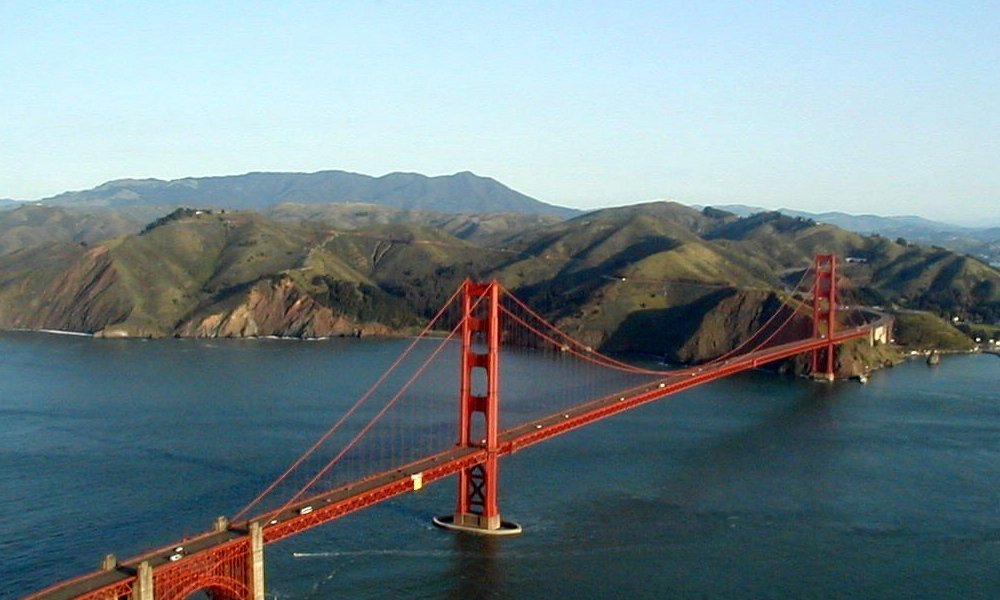
(photo from the home page of Nice Air FBO at RHV; the home of the Arrow IV RG-201 we flew).
Later, Doug told me people reported to the local media a suspicious airplane flying around at about the time we did. Gee, people, relax! (-8
Coming back we made a few maneuvers, one of them involving +4 G. Congratulations to Doug for withstanding these trials in a top form. It was a long trip (3 hr) and we've seen a lot during that time, including caves in shoreline cliffs, forested hills and windsurfers apparently escaping from Alcatraz.
There is a sequence of shots from our approach to Bromma, where you
can see that we were cutting a corner a little on our approach (didn't
quite fly a rectangular pattern). The reason was that we were coming in
at the very last minute (5:00 pm) before they closed the airport. That's
the new noise avoidance regulation on Saturdays (@#*&!). But notice
that the four lights to the left of the runway (ESSB, RWY 12) showed the
correct vertical approach path: two white + two red, until the very last
part of approach, where they changed to all red (= below the glide path,
but PAPI = Precision Approach Path Indicators, are not meant to be
watched so close to the runway. One manufacturer says PAPI is
effective only from 9-19 km down to within 1000 ft from touchdown).
OK, here are some nice photos from my 2003 flying in the Sierra Nevada
near Lake Tahoe, California. Just small pics, I'm going to put more
and larger ones at some point (promise).
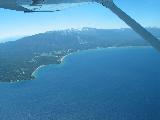 |
 |
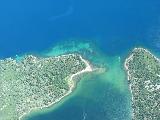 |
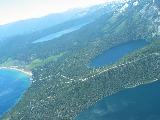 |
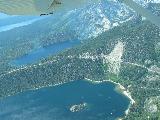 |
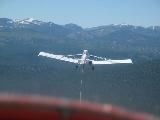 |
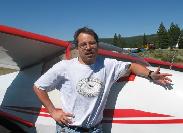 |
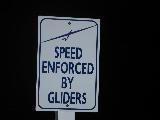 |
 |
 |
Have you done a loop? In a plane without a propeller (glider)? I think you should.
How about stepping outside and jumping from the plane at 14000 ft? Scary? NOT.
Or better yet, have you taken
a lesson of aerobatics in a Bellanca Decathlon plane? (There is one
belonging to Tullinge Aerobatics Center, at the still-open Tullinge
airfield in Stockholm).
Off-scale fun. Seems so easy when
you are guided by a good instructor (Gabor Varga). Loops, slow rolls,
hammerheads, inverted flight.
But these are stories for another day...
I was issued a Canadian Private Pilot license. It's based on my FAA license but I had to pass an exam from aviation regulations in Canada (PSTAR). Since they post 200 possible multiple-choice questions as preparation (no answers, which I had to find in actual regulations :(, it took me only 12 out of allotted 90 minutes to achieve 100% (!) rate on 49 Q's. Good short-term memory :-)
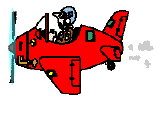 If you want to know how airplanes fly and maybe even learn to fly in your
soft chair, read this on-line book:
"See How It Flies" by J. Denker
If you want to know how airplanes fly and maybe even learn to fly in your
soft chair, read this on-line book:
"See How It Flies" by J. Denker
In October we flew with Adas direct to Washington-Baltimore International (BWI). We visited both Baltimore and Washington (at the Capitol: "oh, it looks exactly like in Forrest Gump!"), worked at Johns Hopkins U. and Space Telescope Sci. Inst., and had lots of fun over a couple of days. BWI has a very nice operator (Signature Av. I think). We flew directly, obeying the arcane security rules in the BWI-Dulles-National triangle. Great 4-5 hr roundtrip.